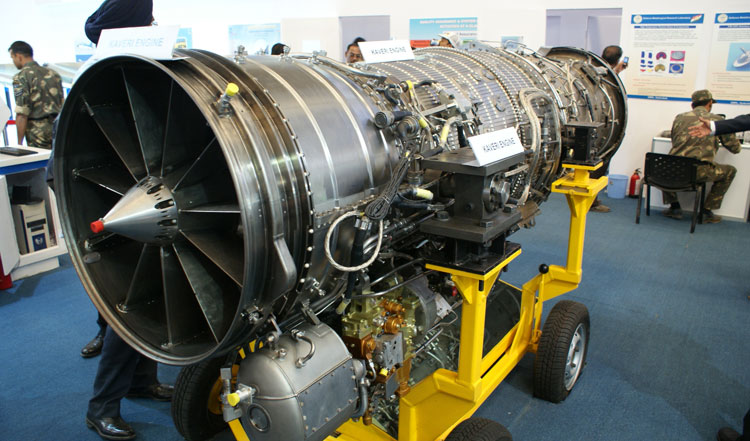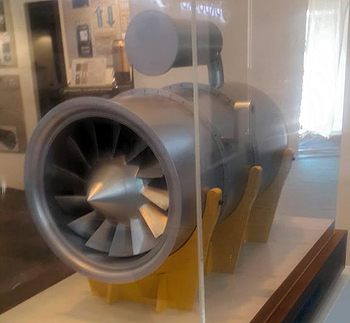The test flight of the Indigenous Technology Cruise Missile (ITCM) from the Integrated Test Range (ITR) was unsuccessful because the Manik engine failed. This failure is a big setback for India's Unmanned Aerial Vehicle (UAV) and Missile programme.
 |
The Author is Former Director General of Information Systems and A Special Forces Veteran, Indian Army |
Manik turbofan GT engine developed by DRDO-GTRE
During the DefExpo 2020 held in Lucknow, Uttar Pradesh in February 2020, DRDO announced the completion and “closure” of the Nirbhay project and the launch of the Indigenous Technology Cruise Missile (ITCM). The ITCM is powered by the indigenous Manik engine and an RF seeker, both developed by the Defence Research and Development Organisation (DRDO); Manik engine by the DRDO laboratory Gas Turbine Research Establishment (GTRE) located at Bengaluru and the RF seeker by the DRDO laboratory Research Centre Imarat (RCI) located at Hyderabad, Telangana. Maiden tests of the ITCM fitted with the Manik engine and RF seeker were earlier expected to be conducted in April 2020. Air and submarine-launched variants of the ITCM were also proposed to be developed.
On October 28, 2022, the test flight of the ITCM from the Integrated Test Range (ITR) was unsuccessful because the Manik engine failed. The failure is being seen as a big setback for India’s Unmanned Aerial Vehicle (UAV) and Missile programme.
Media has quoted unnamed officials saying that the engine developed “technical glitches” after the post-launch boost phase, causing the missile to plummet into the sea within 30 seconds of its launch. A defence-scientist was quoted as saying, “The engine was supposed to start after the initial take-off from the specially designed mobile launcher. But it did not start, possibly owing to a snag. The system then fell down.”
In November 2021, the DRDO Chief had said that DRDO has designed, developed, and manufactured a small turbofan engine for unmanned aerial vehicle applications
The GRTE has developed the 400-kg thrust class Small Turbofan Engine (STFE) for the propulsion needs of subsonic unmanned air vehicles (UAVs). The twin-spool generic engine is designed and developed for a short operating life. It’s an expendable engine that is expected to last the flight time of the UAV or cruise missile that it powers. To begin with, the engine is to power the ITCM. The Manik turbofan engine features include Engine Mounted FADEC system, an onboard gas generator for engine starting, and an integrated alternator. Its specifications are: thrust – 425 Kgf (IAS, SJS); by-pass ratio – 1.0 ± 0.05; power off take – 3 kW; SFC (kg/lgf/hr) - 0.95 ± 0.05’ weight – 100 kg, and engine accessories – 20 kg.
In November 2021, then DRDO Chief Sateesh Reddy had said that DRDO has designed, developed, and manufactured a small turbofan engine for unmanned aerial vehicle applications, which has completed design validation tests on the ground and is presently undergoing experimental flight trials. He further said that on successful completion of flight trials, derivatives of these engines will be manufactured for various unmanned aerial vehicle applications, making the country ‘Atmanirbhar’ in this complex and critical technology.
The following is relevant in context of the Manik engine:
- Ground testing of the engine was completed in May 2018 with trials commencing February 2018 including at an altitude above 11,000 feet as part of high-altitude cold climate trials.
- The flight test of the Manik engine in October 2020 was reportedly aborted due to technical snags.
- The Manik engine was flight-tested in October 2021 but the test was “partially” successful; the engine reportedly performed as expected but the missile did not reach the desired range. It remains ambiguous if the engine gave requisite acceleration.
It may be recalled that in 1986, the Ministry of Defence (MoD) authorised the DRDO to launch a programme for developing an indigenous engine for the Light Combat Aircraft (LCA) Tejas fighter aircraft. The GTRE eventually took up a turbofan design which it designated the GTX-35VS Kaveri engine. Full-scale development of this engine was authorised in April 1989 in what was then expected to be a 93-month programme costing 3.82 billion ($47.8 million).
It is well known that India has been running behind in engine technology for the past several decades. Couldn’t we have done better if the contract for developing the engine was given to the private industry?
The GTX-35VS Kaveri engine was intended to power production models of the Tejas fighter aircraft, which it failed despite years of development and huge amount of money spent. In August 2010, the MoD issued a press release giving reasons for delay in development of the Kaveri Engine, which included: ab-initio development of state-of-the-art gas turbine technologies; technical/technological complexities; lack of availability of critical equipment and materials and denial of technologies by the technologically advanced countries; lack of availability of test facilities in the country necessitating testing abroad, and; non availability of skilled/technically specialised manpower.
It is well known that India has been running behind in engine technology for the past several decades. This is despite India not lacking the brain-bank which is obvious from the demonstrated performance of Indians abroad. Couldn’t we have done better if the same contract for developing the Kaveri engine was given to the private industry? Isn’t this how it has been and is being done in the US Britain and Europe? Also, before giving a contract to the DRDO for full-scale production of the Kaveri engine in April 1989, wasn’t it considered the necessity to check its feasibility taking into account the multiple excuses listed later in August 2010?

Kaveri turbofan engine
Our aim should be to beat China in defence technology as early as possible. But the Comptroller and Auditor General (CAG) has consistently pointed out rampant corruption and lack of accountability in the DRDO. In addition there is also the ongoing DRDO espionage case emerging from Chandipur in Baleswar District, which has international dimensions. In this regard, at least five permanent or contractual employees of the Interim Test Range (ITR) of DRDO were arrested till the last report. Also, the contract for the online conduct of Recruitment Exams by DRDO November 12, 2022 onwards has been given to the blacklisted firm ‘Sify’, which was recently blacklisted for gross irregularities in conduct of recruitment exam for banks.
The governmental defence-industrial complex, including the DRDO, need to be privatised to the maximum possible extent. Converting the Ordnance Factory Board and the 41 Ordnance Factories into DPSUs was a sham with the same management, workers, work culture and accountability, facilitating the deep state to continue making money.
The governmental defence-industrial complex, including the DRDO, need to be privatised to the maximum possible extent
For the same reason rather than bringing the private industry centre-stage in defence manufacturing, the private industry is being involved and subordinated to the DRDO and DPSUs. A veteran Vice Chief of Army Staff has the following to say in this context:
- Involving the PSU/DPSU with the Private Sector is a ploy by the bureaucracy to retain control and therefore the underhand dealings.
- The PSUs provide the bureaucrats with tips as to how and where to look, in order to swing the underhand deal.
- Granted that the technology is galloping in the present day environment and one cannot freeze the design and technical specifications forever and after, but the flexibility to adopt the latest should rest with the Project Manager, and which should perhaps cater for a ceiling in cost escalation.
- The bureaucracy despite their best efforts cannot match the speed of decision making that is required.
Finally, the question remains whether we will continue in the same manner or will address the above issues and take corrective actions for betterment of the defence of India.











